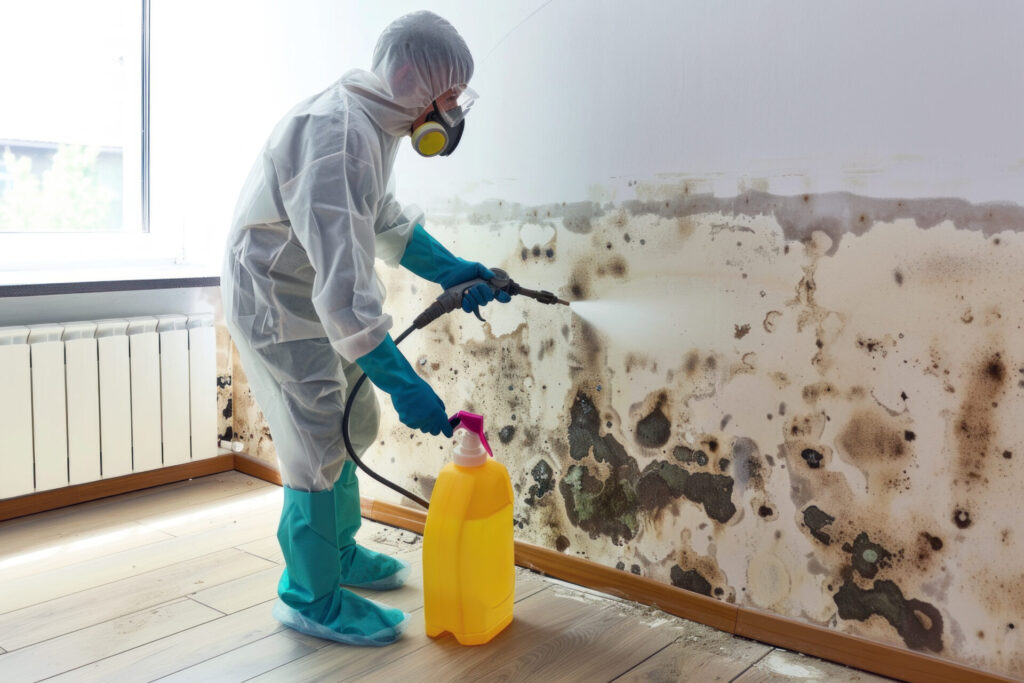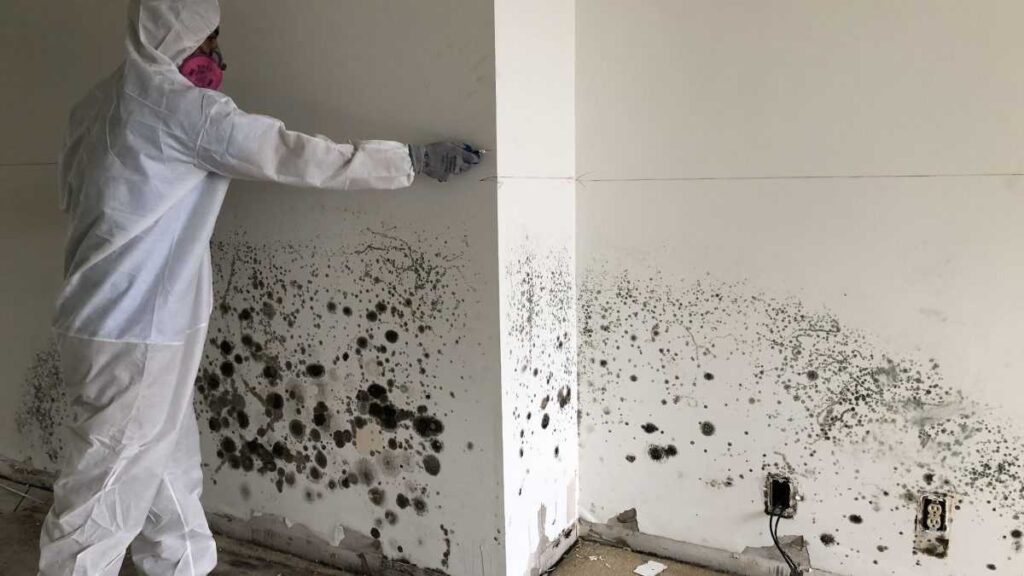Mold is a silent intruder that can wreak havoc on your home or business if left unchecked. At Icon Restoration, we understand the urgency of addressing mold growth to protect your property and health. This comprehensive guide offers expert tips for successful mold remediation, ensuring you can tackle the problem effectively. Whether you’re dealing with a small patch or a widespread infestation, these strategies will help you reclaim your space from mold’s grasp.
Understanding Mold and Its Dangers
Mold thrives in damp, humid environments, feeding on organic materials like wood, drywall, and carpet. It can begin growing within 24-48 hours of water exposure, making swift action critical. Beyond property damage, mold poses serious health risks, including respiratory issues, allergies, and even toxic effects from black mold (Stachybotrys chartarum). Recognizing the signs—musty odors, visible spots, or water damage—is the first step toward remediation.
Common Causes of Mold Growth
- Leaks and Flooding: Unaddressed water intrusions from pipes, roofs, or floods.
- Poor Ventilation: Stagnant air in bathrooms, basements, or attics.
- High Humidity: Levels above 60% create an ideal breeding ground.
- Improper Drying: After water damage, inadequate drying fuels mold proliferation.
Why Professional Mold Remediation Matters
While DIY solutions might seem tempting, professional mold remediation offers unmatched expertise and safety. At Icon Restoration, our certified technicians use advanced tools and techniques to identify hidden mold, remove it safely, and prevent recurrence. Attempting to handle mold without proper knowledge can spread spores, worsening the problem and exposing you to health hazards.
Benefits of Hiring Experts
- Thorough Assessment: Detection of mold behind walls or in HVAC systems.
- Safe Removal: Use of protective gear and containment to avoid spore spread.
- Long-Term Prevention: Recommendations for moisture control and repairs.

Expert Tips for Successful Mold Remediation
1. Act Quickly to Limit Damage
Time is your enemy with mold. The sooner you address water damage or visible mold, the less it can spread. If you suspect mold, isolate the area by closing doors and turning off HVAC systems to prevent spore circulation. Contact Icon Restoration immediately for an assessment—our 24/7 emergency services ensure rapid response.
2. Identify and Fix the Moisture Source
Mold needs moisture to survive, so eliminating it is paramount. Inspect your property for leaks, poor drainage, or high humidity. Repair broken pipes, seal windows, and consider a dehumidifier to maintain indoor humidity below 50%. Addressing the root cause prevents mold from returning after remediation.
3. Use Proper Protective Gear
If you must handle small mold patches yourself, wear an N95 respirator, gloves, goggles, and disposable coveralls. This protects you from inhaling spores or skin contact with mold. However, for extensive growth, leave it to professionals like Icon Restoration, who are equipped with industrial-grade safety gear.
4. Contain the Affected Area
Prevent mold spores from spreading by sealing off the area with plastic sheeting and tape. Use negative air pressure machines if available, a technique our experts employ to keep contamination localized. This step is crucial to protect unaffected parts of your property.
5. Remove and Dispose of Moldy Materials
Non-porous surfaces like glass or metal can often be cleaned, but porous materials like drywall, carpet, or insulation may need removal. Bag contaminated items in heavy-duty plastic and dispose of them according to local regulations. Our team at Icon Restoration ensures safe disposal while minimizing disruption.
6. Clean and Disinfect Thoroughly
Use a detergent solution to scrub mold off hard surfaces, followed by a disinfectant like diluted bleach (1 part bleach to 10 parts water). Ensure proper ventilation during cleaning. For stubborn areas, our professionals use HEPA vacuums and antimicrobial treatments to eliminate residual spores.
7. Dry the Area Completely
After removal, dry the space using fans, dehumidifiers, or industrial dryers. Moisture levels should be below 15% to prevent regrowth. Icon Restoration employs moisture meters to verify dryness, ensuring a mold-free environment.
8. Prevent Future Mold Growth
Install vapor barriers in crawlspaces, improve ventilation with exhaust fans, and monitor humidity regularly. Regular inspections by Icon Restoration can catch potential issues early, saving you from costly repairs.
DIY vs. Professional Mold Remediation
For minor mold issues (less than 10 square feet), DIY remediation might suffice with the right precautions. However, larger infestations or hidden mold require professional intervention. Here’s a quick comparison:
- DIY: Cost-effective for small areas, but risky without expertise.
- Professional: Higher cost but ensures safety, thoroughness, and prevention.
At Icon Restoration, we offer free consultations to assess your needs, ensuring you get the right solution without unnecessary expenses.
Health Risks of Mold Exposure
Mold exposure can trigger allergic reactions, asthma attacks, and immune system issues. Black mold, in particular, produces mycotoxins that may lead to neurological problems or chronic fatigue. Vulnerable groups—children, the elderly, and those with compromised immune systems—are at higher risk. If you experience symptoms like coughing or eye irritation, seek medical advice and contact us for immediate remediation.
Cost of Mold Remediation
The cost varies based on the extent of damage, location, and required repairs. Small DIY projects might cost $50-$200, while professional services can range from $500 to $6,000 or more for extensive cases. Icon Restoration provides transparent pricing and works with insurance providers to ease financial burdens—contact us for a detailed estimate.
Legal and Insurance Considerations
Check your homeowner’s insurance policy, as mold damage coverage varies. Document the damage with photos and keep receipts for remediation efforts. Some states require licensed professionals for mold removal, a standard we meet at Icon Restoration, ensuring compliance and peace of mind.
Icon Restoration’s Mold Remediation Process
- Inspection: Our team assesses the extent of mold growth using moisture meters and thermal imaging.
- Containment: We seal off areas to prevent spore spread.
- Removal: Safe extraction of mold and damaged materials.
- Cleaning: HEPA vacuuming and antimicrobial treatment.
- Restoration: Repairs and moisture control to restore your property.

Frequently Asked Questions
How Long Does Mold Remediation Take?
Depending on the severity, it can take 1-5 days. Icon Restoration provides a timeline after the initial inspection.
Can Mold Come Back After Remediation?
Yes, if moisture issues persist. Our preventive measures minimize recurrence.
Is Mold Remediation Covered by Insurance?
It depends on your policy and the cause (e.g., sudden leaks vs. neglect). We assist with claims processing.
Conclusion
Don’t let mold take over your property—act swiftly with expert guidance from Icon Restoration. Our proven remediation tips and professional services ensure your home or business remains safe and healthy. Visit iconrestoration.com for more resources or call us today for a free consultation. Together, we can stop mold in its tracks and protect your investment.
Keywords: mold remediation, Icon Restoration, biohazard cleanup, mold removal, water damage, health risks, professional remediation, moisture control, mold prevention.